I call a reef tank a tiny piece of the ocean inside glass walls. When you think of an aquascape, adding various reef animals or creatures is a part of it. But what type of animal can you have in a reef tank?
You can add many creatures, such as fishes, various corals, and invertebrates like snails, shrimps, crabs, etc. But not all saltwater fish, corals, or invertebrates are suitable to be in a reef tank together. That is why it is also essential to ensure the animals you add are reef-safe.
Now the question is, what are these animals that you can precisely keep safely in your reef tank? If you want to find out, I suggest you read this article because I have prepared it with everything you need to know.
What Are Reef-Safe Animals?
Before you learn about what to keep in your reef tank, knowing about the tank animal’s safety is more important. That is why it is essential to know about reef-safe tank animals.
Reef-safe is a term aquarists use to refer to different types of marine life that are safe for a reef tank. And by safe, they mean those that are not always looking for an opportunity to pick a fight or attack other fish and invertebrates and destroy peaceful corals.
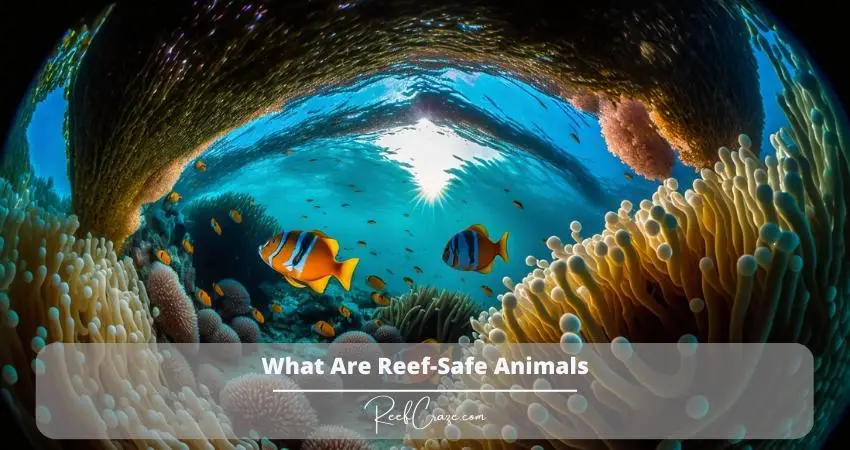
The thing about saltwater animals, especially the fishes, is that none of them are entirely reef-safe. If provoked or given the opportunity, they can create a mess. But most animals marked as reef-safe are usually not so vicious or violent.
What Type Of Animals Can You Have In A Reef Tank?
Reef tanks are sacred for aquarists. They spend their valuable hours, days, and months building an entire reef tank. So it is natural that, as an aquarist, you will want what is best for the tank.
As a result, it becomes essential to choose the right and safe tank animals. If you are not careful about picking the animals, it will lead to predatorial behavior, a vicious fight, and a dangerous aquarium environment.
So the question is, what type of animals can you have in a reef tank? Or more importantly, what are the reef-safe animals you can have in your reef tank?
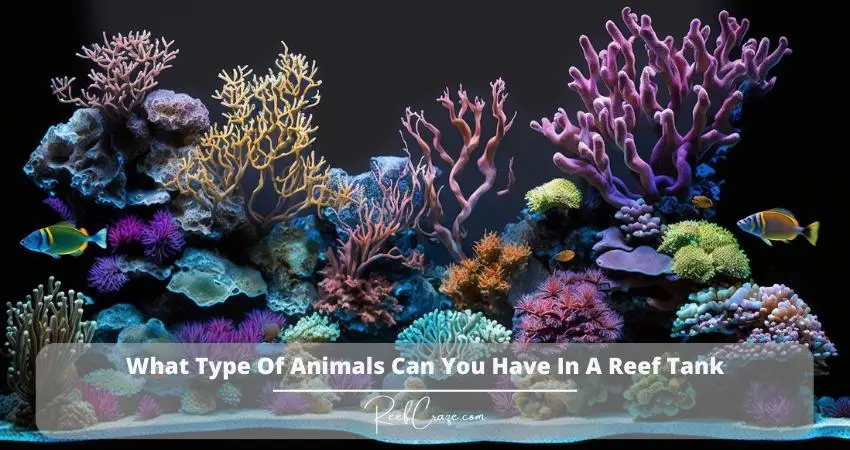
You will find endless fishes and other animals suitable for keeping the tank environment peaceful and beautiful. However, since you cannot have them all in one place, let’s see what you can have.
- Fishes: You will obviously want some fish in your reef tank. Without them, the tank will not look complete and miss the reef vibe. As for which fish will be better, you can choose clownfish, gobies, chromis, and other beautiful non-predator fishes.
- Corals: Yes, corals are also living things, even if they do not seem so. Corals are a wonderful addition to the reef tanks and enhance their beauty of it. From mushroom coral and zoas to leather corals, you have many options.
- Invertebrates: Invertebrates are also popular reef tank animals. There are various types of them, and most of them are commonly available literally everywhere. You can add snails, crabs, shrimps, starfish, etc., to your reef tank to improve its appearance.
Reef-Safe Fish For Your Reef Tank
Fishes are always the first choice as reef tank animals. You have endless options when it comes to getting fish for your reef tank. But if you intend to add other animals, it is best to choose reef-safe fishes like the following.
Clownfish
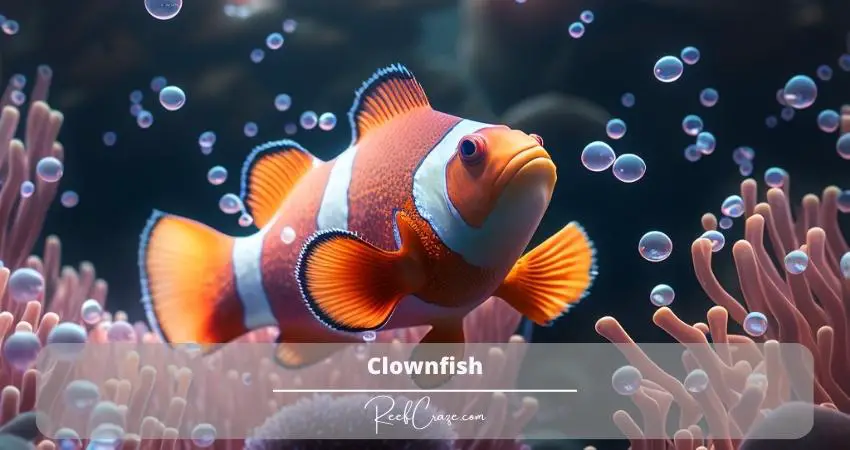
If you have watched Finding Nimo, you know which fish I’m referring to here. The cute little striped fish you saw in the movie is a clownfish, and they are extremely popular as reef tank fish. And even the clownfish has a large variety that comes in various shapes and sizes.
And the Ocellaris clownfish is the most popular beginner-friendly clownfish. If you are keeping them for the first time, it is best to keep them in pairs. However, you might want to avoid having maroon clownfish as they are notorious for their aggressive behavior.
Some other reef tank-friendly clownfish species are:
- Tomato clownfish
- Clarkii clownfish
- Percula clownfish
The best option for getting yourself reef-safe clownfish is tank-raised ones. These fishes are bred and raised in captivity for commercial purposes, and handling them is comparatively less hassle.
Angelfish
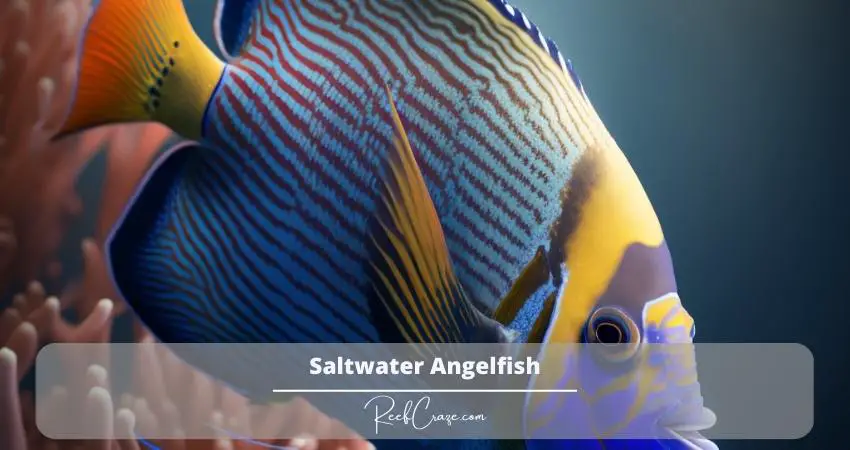
If you have a large reef tank, you can have plenty of small angelfish. These fish are known for being reef-safe and living peacefully. Angelfish can also be a part of your tank’s cleanup crew. How?
Because these fish feed on algae, they can easily balance the tank’s algae level. But if you do not have grown algae in the tank, you will have to provide the fish with food sources, so they do not starve. Besides, if they do not get enough food, they can start feeding on the corals.
If you keep larger angelfish species, you might want to avoid keeping shrimps and other invertebrates. Because they would start feasting on those. And if you want to avoid the situation, you can get yourself the Japanese swallowtail angelfish because they do not bother corals or other inhabitants.
You can get yourself the following angelfish species.
- Japanese swallowtail angelfish
- Flame angelfish
- Multi-color angelfish
- Fisher angelfish
- Coral beauty angelfish
Gobies
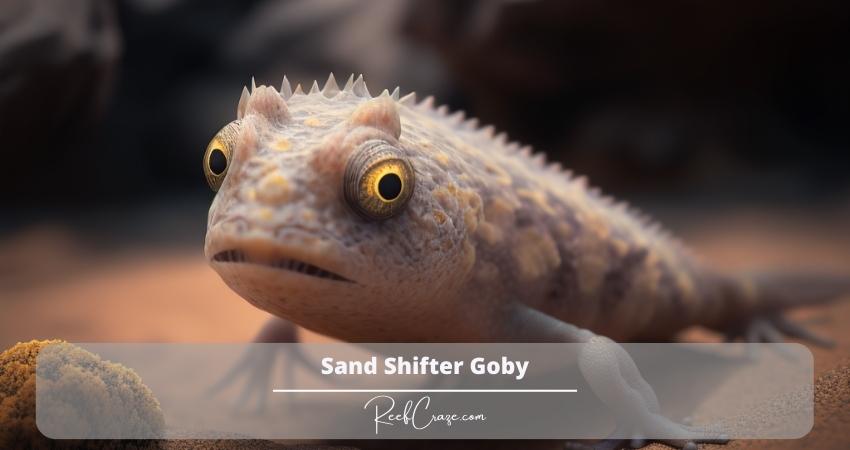
Gobies are tiny fishes and are enjoyable to watch as they swim around the reef tank. Gobies grow only a few inches, yet they help keep your tank cleaner. They thrive on algae and reef tank pods and do not harm corals or other fish.
Generally, there are three types of gobies available: shrimp gobies, small gobies, and sand sifting gobies. And there are many other gobies species under each category.
- Shrimp Gobies: Just as their name, shrimp gobies share living space with shrimps in the sand. They even warn their roommate shrimps if there is any possible danger approaching. Some reef-safe shrimp gobies are orange-spotted goby, diagonal bar prawn goby, watchman goby, etc.
- Small Gobies: Small gobies are probably among the most adorable reef tank fish you will find. They do not grow more than 2 inches even after adulthood, which makes them even more amusing to watch. The best small gobies are yellow clown goby, gold line goby, firefish goby, etc.
- Sand Sifting Gobies: Sand sifting gobies got this name for plowing through reef substrates and going through uneaten food, wastes, and detritus. Not only does it help to remove nitrate from water, but it also helps aerate the sand, releasing toxic elements under the sand beds. Some reef-safe sand-sifting gobies are diamond watchman goby, engineer goby, blue dot goby, etc.
Jawfish
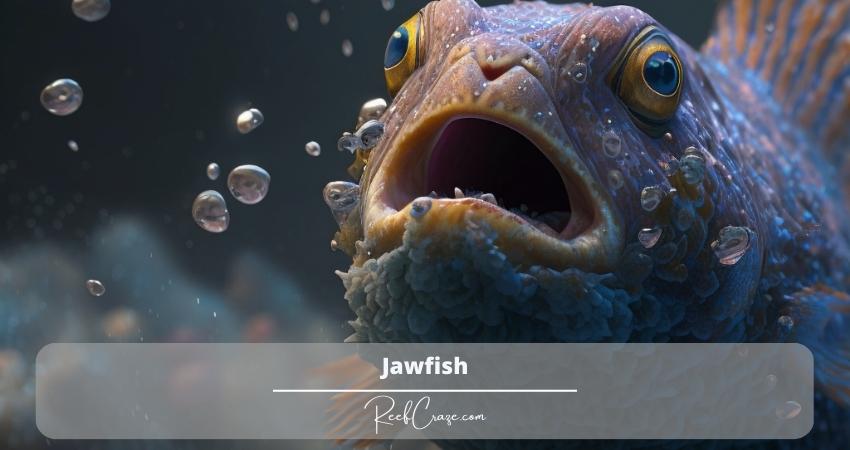
Jawfish are small, lively, and have a vibrant color that makes your reef tank more cheerful. And before you assume anything on your own, let me make it clear that jawfish are reef-safe and do not harm other tank inhabitants.
The most common jawfish that you can add as your reef animal is the blue-dotted jawfish. They grow about 4 to 6 inches at a mature age and are carnivores. So you can bet they will be a good part of your tank’s cleaning crew.
But you must not underestimate their small size and think you can squeeze them into any small tank. No. These jawfish need enough space to move and burrow, and you will need at least a 30-gallon tank to have them. You can have the following types of jawfish in your reef tank.
- Blue dotted jawfish
- Yellow jawfish
- Tiger jawfish
- Dusky jawfish
Tangs
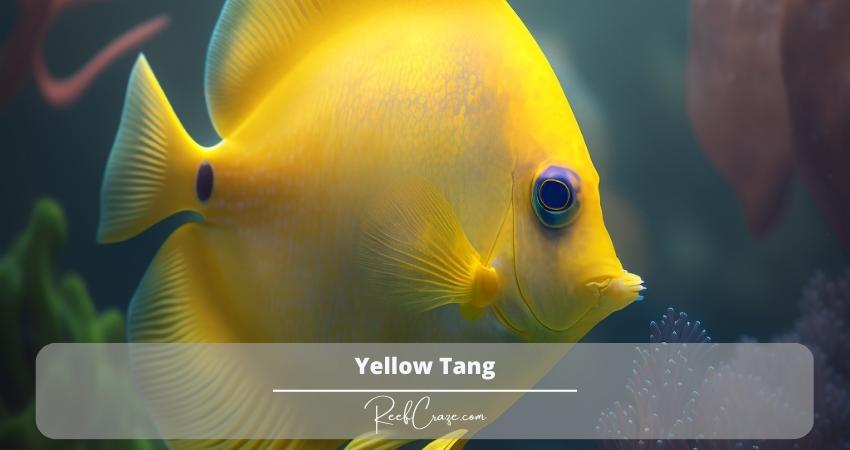
Tangs are also known as surgeonfish, even though they do not perform any surgery. These fish are also well-known for being reef-safe, easier to maintain, and having peculiar lip shapes. As for their diet, tang fishes live on algae, making them safer to have if you have corals or other invertebrates in your reef tank.
But the problem with these fish is they are not suitable for smaller reef tanks. Since surgeonfish grow well over time, it is best to have them only if you have a larger tank. So you might have to plan ahead to get the fish to ensure your tank size is suitable for them.
These are the best of reef-safe tang fishes.
- Blue tang
- Purple tang
- Yellow tang
- Naso tang
- Achilles tang
Chromis
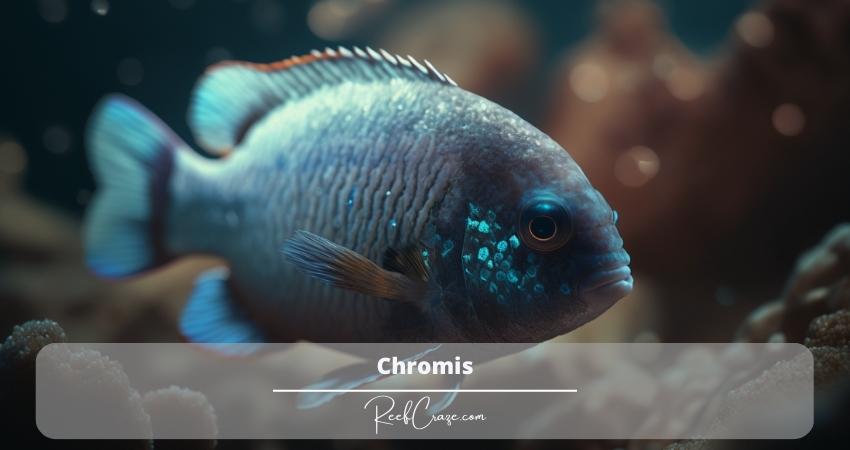
Chromis is a species of a fish group known as damselfish. Though they are tinier in size and shape, chromis have an incredibly long lifespan. But that comes with proper care and maintaining a healthy diet.
They are popular reef tank fish both for their beautiful color and peaceful behavior. Since chromis are also not very challenging to maintain, they are recommended as beginner-friendly reef tank fish.
Chromis have a wider variety. However, not all of them are suitable for reef tanks because some of them can be pretty wild and aggressive. But you can have the following two types of reef-safe chromis in your reef tank.
- Blue-green chromis
- Blue chromis
Dottyback
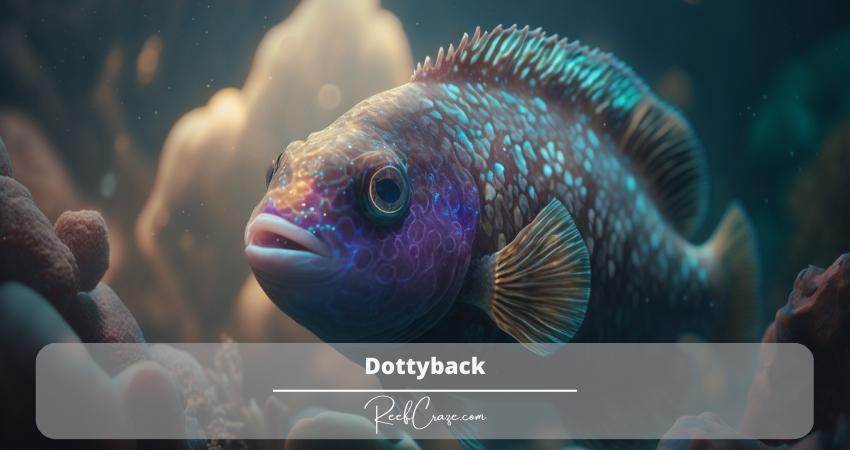
Now, there is confusion regarding whether you should or should not have dottyback fish in your reef tank. Dottyback fish have a bad reputation for being aggressive and bullying other fishes that enter their territory. But as long as that does not happen, this fish will give your reef tank a peaceful vibe.
To be honest, leave them alone, and they will appear as though you spread rumors about them on purpose. And while some may show aggression towards other fishes and some invertebrates, they usually leave the corals alone.
However, not all dottybacks are that aggressive. Some of them can live harmoniously with other tank mates without creating havoc. But if you are worried but still want them, you can have this fish in a tank with corals only.
Here are some dottyback fish known for being tank-safe or, more specifically, coral safe.
- Orchid dottyback
- Royal dottyback
Blenny
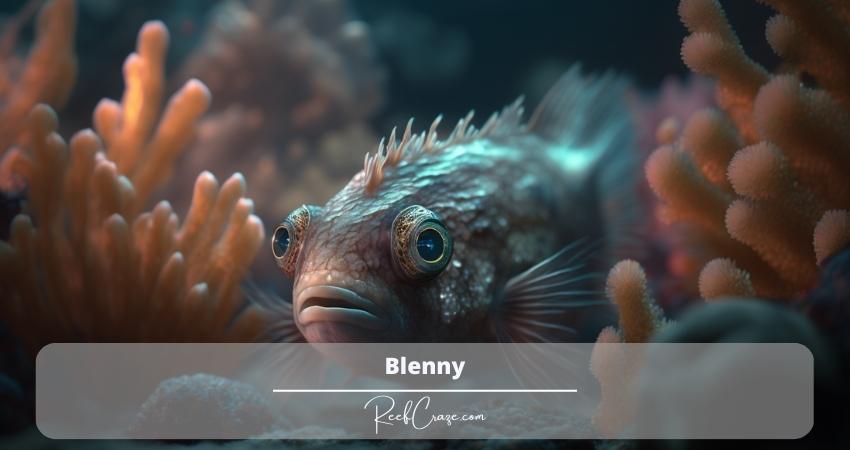
Blennies are the most reliable ones when it comes to choosing a reef-safe tank animal. They mostly reside at the bottom of the tank and exhibit stronger nesting behaviors than most other reef tank fishes.
Now, Blennies have many types, and some are more suitable than others when it comes to having them in the tank. They are not very hard to maintain and do not follow any special diet. So whether you are a beginner or a pro, you can manage them just fine.
The drawback of having bennies is that they can be quite jumpy sometimes. So housing them in an open tank might not be the best idea. But you can choose from the following if you want bennies in your reef tank.
- Striped Blenny
- Canary Blenny
- Tailspot Blenny
- Bicolor Blenny
- Midas Blenny
Wrasse
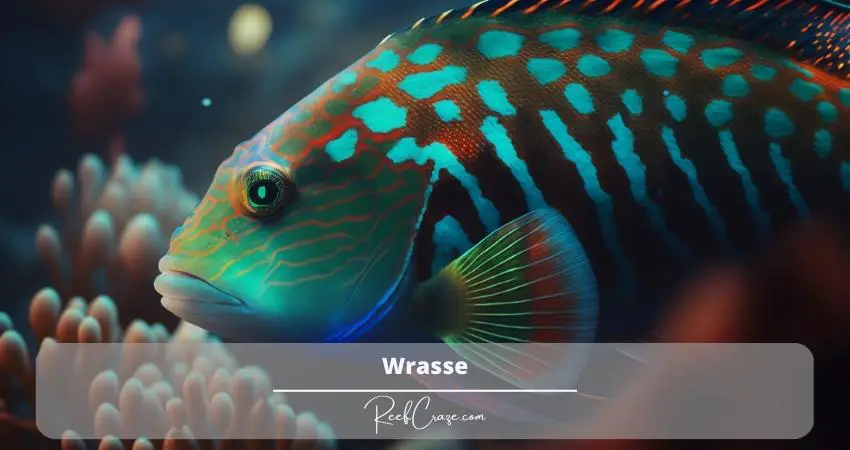
While most other saltwater fishes are partially reef-safe and not reef-safe at all, wrasses are among the ones that are entirely safe for saltwater aquariums. Like freshwater betta fish, wrasses are also born as females, but some of them become male depending on the environment and other internal growths.
So when you keep tiny wrasses in your aquarium or your tank’s existing wrasses breed, you get to witness this wonderful transformation. And what makes them even more special is that they are naturally shy.
On top of that, they are vibrant and colorful and look absolutely stunning when moving around. So if you are looking for non-aggressive fish for your reef tank, wrasses can be an ideal choice.
But which would be the best for your reef tank and keep the environment safe? Here are some that you might want to consider.
- Scott’s fairy wrasse
- Yellow banded possum wrasse
- Carpenter’s wrasse
- Melanurus wrasse
- Six line wrasse
- McCosker’s wrasse
Corals For Your Reef Tank
Next to fish, corals are also popular as reef tank animals. That’s right. Corals are also considered living things because they are. You will be surprised to know how they can benefit your reef tank if you maintain them well. So let’s see which corals are best for your reef tank.
Zoanthids/Zoas
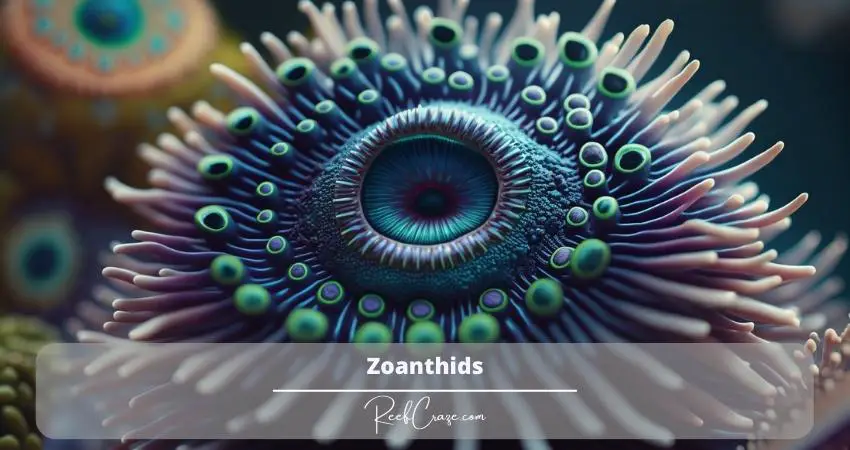
You cannot help but love the sight of zoanthids or zoas. They are beautiful, have vibrant colors, and come in various types. Maintaining zoas does not require any different tank water quality or light temperature, making it easier to maintain them.
But the downside of this coral is that they grow extremely fast. So if you are not looking forward to fragging too often, maybe zoas are not for you.
Mushroom Coral
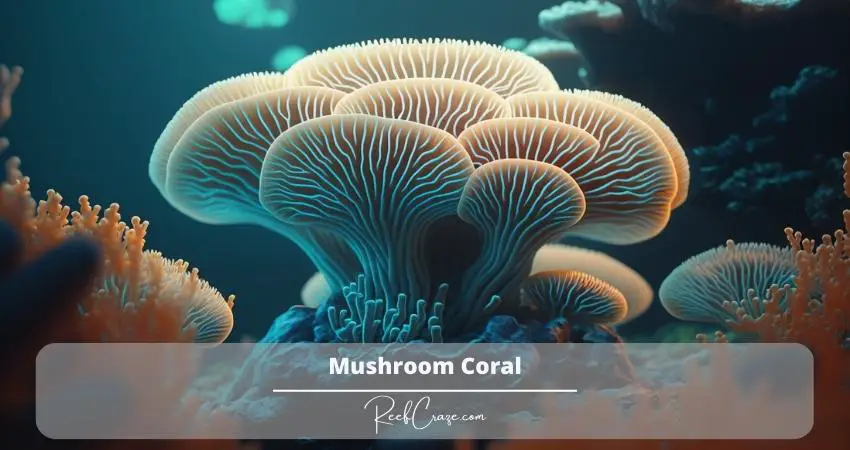
Mushroom corals are among my favorite coral types because they are safe for tank fish. Besides, these corals are beginner-friendly and hardly require much attention.
But you must ensure to keep mushroom corals under low light and flow. Fluorescent lights are ideal for them as they draw energy from their light source.
Star Polyps
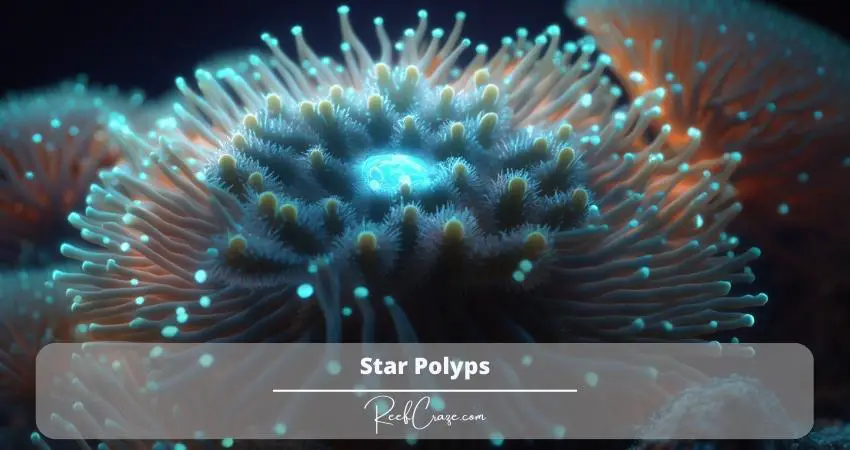
Though they are usually known as stat polyps, these corals are also known as the green star and daisy polyps. They are also beginner-friendly for plenty of reasons.
You can keep star polyps corals under either low or high light as they have higher tolerance in both. Moreover, you don’t even have to worry about maintaining a water flow level.
Bubble Coral
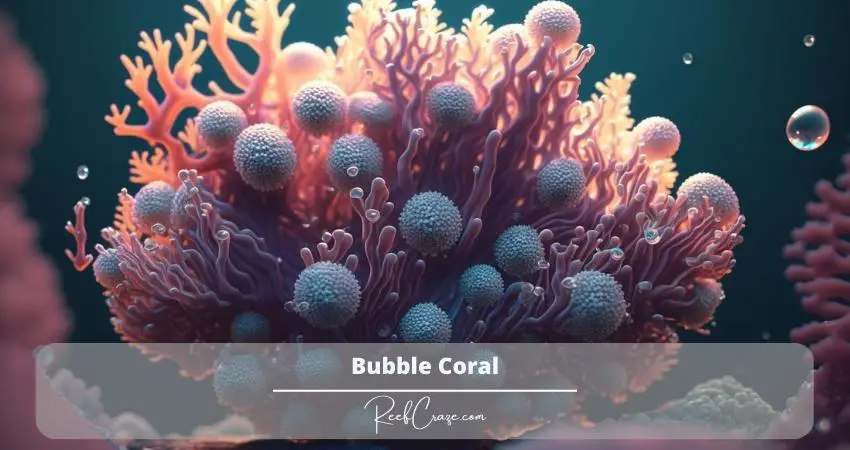
Bubble corals are popular hardy corals and have an eye-catching appearance. These corals are basically water bags, moving with the water flow.
Bubble corals are found in various colors, such as pink, white, green, purple, etc. And you can maintain them pretty easily under low light.
Leather Corals
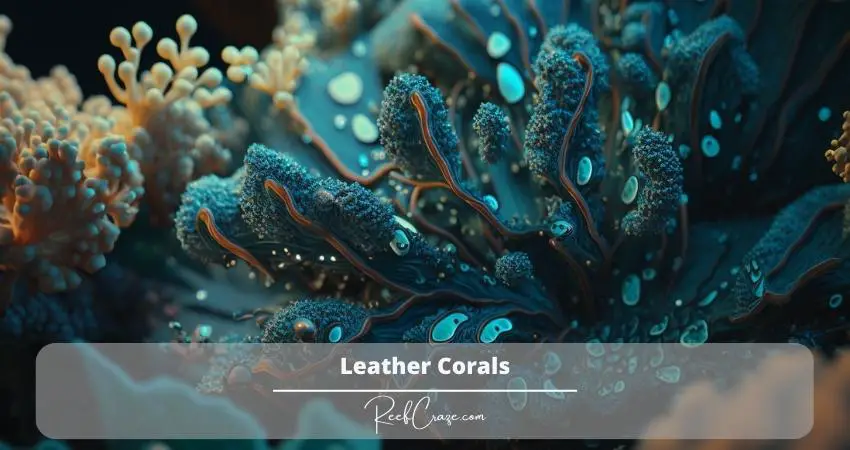
Leather corals are striking and enhance the reef tank’s appearance entirely. They look a lot more like mushrooms than mushroom corals do and are suitable for beginner aquarists.
They do well in turbulent flow and moderate light. And they are well-known for maintaining their space and keeping others at bay with their stings.
Finger Leather Coral
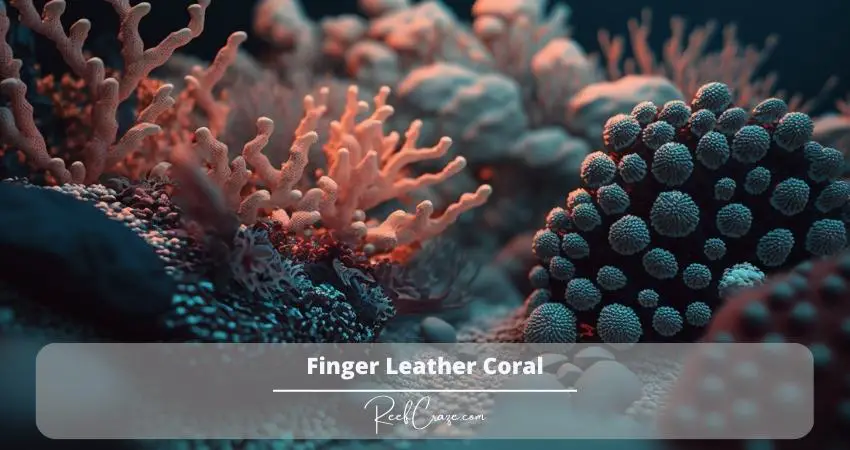
If you look at these corals’ projections branches, you will notice how similar they appear to human fingers. So it is no wonder they are called finger leather coral.
These corals are also suitable for reef tanks and can easily adapt to any water flow and light. But it is best to keep them in moderate light in captivity.
Reef-Safe Invertebrates For Your Reef Tank
Invertebrates are probably the most fascinating part of a reef tank. These reef tank animals are not just a part of the tank habitats, but most of them also play the role of tank cleaning crews.
But the problem with these invertebrates is that not all are reef-safe. If you choose the wrong ones, you might lose your tank fish or corals because some invertebrates feast on those. So here is my recommendation on choosing reef-safe invertebrates.
Shrimps
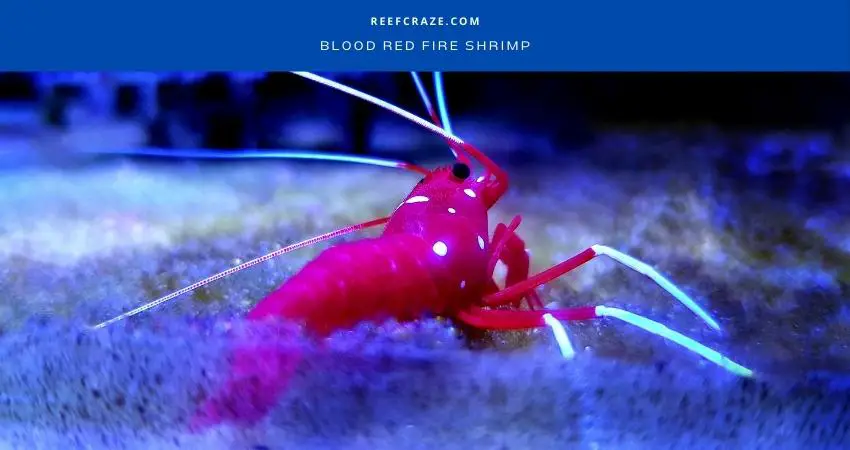
Shrimps are more ornamental than anything because of their appearance. They are colorful and safe to have in your reef tank with other things.
The advantage of having shrimps is they will keep your aquarium clean by consuming detritus. Some even eat tank waste and parasites off the fish, which is vital in ensuring a healthy tank environment.
Snails
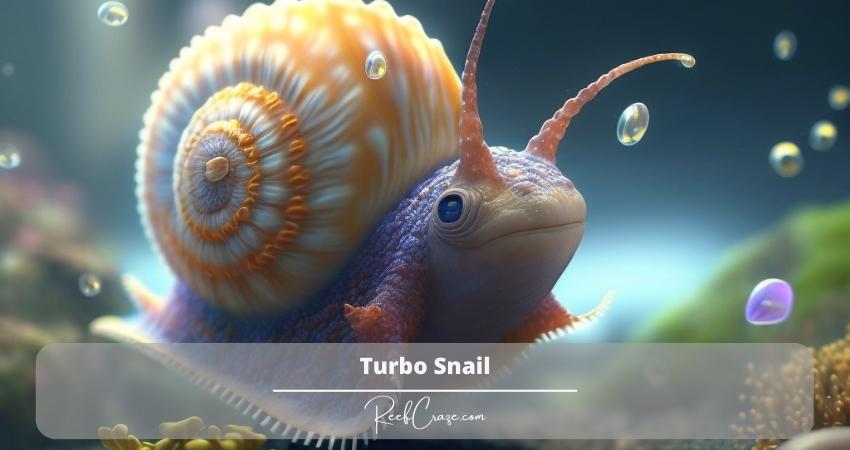
Snails are the most peaceful marine invertebrates I have ever seen. These animals spend most part of their days munching on algae, detritus, food waste, fish waste, etc. And they spend most of the other part of their day sifting sand.
Thus, snails are an excellent choice as reef tank animals as they also serve as a clean-up crew. Some recommended marine snails are star snail, turbo snail, Astraea snail, cerith snail, nerite snail, tiger sand conch snail, etc.
Crabs
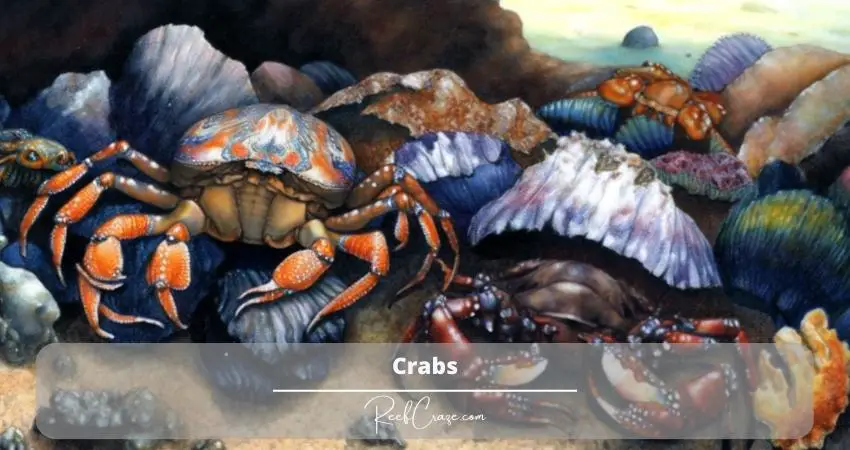
Now, marine crabs have a reputation for being scavengers and eating whatever they can get. It makes them not so reef-friendly. However, some crabs are safer than others and make suitable tank animals.
You can select crabs that are selective when it comes to food. And some such marine crabs are horseshoe crabs, emerald crabs, sally lightfoot crabs, etc.
Hermit Crabs
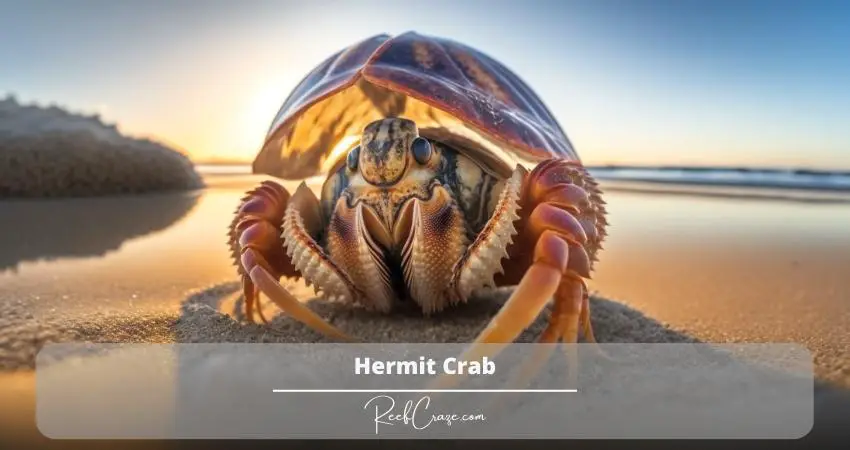
Hermit Crabs are different from other crabs in many ways. But when it comes to aggressive behavior and carnivore food habits, they are pretty similar. But the good thing is some hermit crabs are also selective eaters and safe for your reef tank.
A few hermit crabs are known for being harmless. And some of them are dwarf blue leg hermit crab, dwarf red tip hermit crab, scarlet hermit crab, electric orange hermit crab, etc.
Starfish

Starfish is yet another popular marine tank invertebrate. From removing algae to sifting sand, starfish benefit your reef tank in various ways. Among all its species, brittle starfish and serpent starfish are considered reef-safe.
Flame Scallop

When you have flame scallops in your reef tank, you can stay free of worries about them. Flame scallops do not harm corals or other reef animals. But make sure to feed them regularly to keep them alive.
Frequently Asked Questions
Can I keep fish in my reef tank?
Of course, you can keep fish in your reef tank. But some aquarists choose not to do that as most saltwater fish eat coral or can be aggressive toward other corals. So if you wish to have fish in your reef tank, the best option is to go with reef-safe fish that will live peacefully and not cause any issues.
What corals are best to start with?
If you are a beginner, it is best to start with corals that are easier to maintain. The most preferred type would be the star polyps. Other than this one, you can also have leather coral, trumpet coral, bubble coral, open brain coral, zoanthids, etc.
Can I have corals in my reef tank without fish?
Yes, you can have corals in your reef tank without fish, but then you also need to ensure the corals are well-fed. Not having fish in a tank with corals will help keep the tank cleaner with no fish food leftovers or waste.
Can I have starfish in my reef tank?
While starfish might be a popular reef tank animal, having them in your tank is not always the best idea. But some starfish are actually reef-safe, such as serpent starfish and brittle starfish.
Final Words
All animals, including reef tank ones, have their different behavioral traits, food habits, and survival instincts. That is why most of the time, the outcome is unpredictable.
But if you are wondering what type of animals can you have in a reef tank, the ones I mentioned in this article will give you a good start. Make sure to research more on these animals before you get any to understand how you need to handle them.
